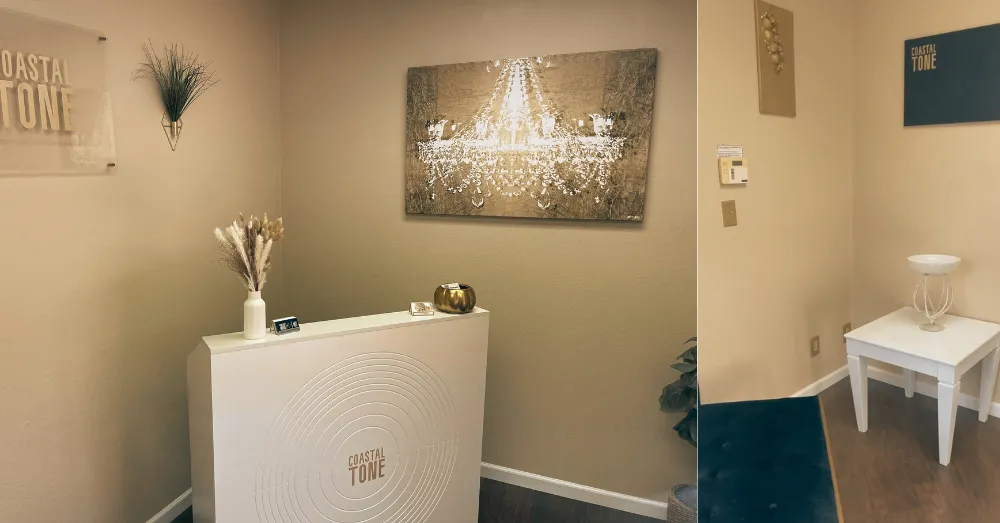



Align Your Mind, Body & Routine
Short reads for long-term results: mindset, body contouring, and lifestyle systems that stick

Why Real Wellness Isn’t Aesthetic. It’s Energetic.
Why Real Wellness Isn’t Aesthetic. It’s Energetic.
Introduction: Beyond the Mirror
People frequently envision a particular appearance when they think about wellness. A slim body. Clear skin. A toned figure. These images are everywhere—in ads, social media, even in health spaces. But here’s the truth: looking healthy is not the same as feeling well.
Aesthetic wellness focuses on the outside. It’s about appearances and numbers. But real wellness goes deeper. It is about energy. It has to do with your morning routine. How calm you feel after a busy day. How your body enables you to lead the life you want.
Energy-based wellness is not about chasing an image. It’s about living with steadiness and ease. This approach cares for the nervous system, the mind, and the body together. It makes wellness sustainable. It gives freedom from constant comparison.
This blog will explore why true wellness isn’t aesthetic—it’s energetic. And how small shifts can change the way you feel every day.
The Trap of Appearance-Based Wellness
Many people have a single objective when they begin their wellness journey: to look a specific way. They desire radiant skin, lean muscles, or a smaller waist. Although these objectives appear innocuous, they frequently carry pressure. The focus shifts from feeling good to meeting outside standards.
This appearance-first mindset is fueled by diet culture. Social media makes it worse. Every scroll shows “perfect” bodies and quick-fix solutions. The result? People push harder, restrict more, and ignore what their bodies actually need.
The problem is that looks don’t always tell the full story. A person may appear fit but feel drained. They may look toned but struggle with stress or burnout. This is why aesthetic wellness often feels empty. It demands effort without giving lasting peace.
True wellness cannot be measured in the mirror. It lives in energy, calm, and balance. Health starts to feel sustainable at that point—from appearance to experience.
What Energy-Based Wellness Really Means
Pursuing perfection is not the goal of wellness. It's related to your normal feelings. Energy-based wellbeing is centered around vitality, calm, and resilience. It asks: do you wake up with steady energy? Can you handle stress without crashing? Do you feel balanced inside your body?
This type of wellness is not about weight or shape. It’s about connection. Your body, mind, and neurological system work together to support your lifestyle. When they are aligned, you feel strong and present.
Here are 5 signs your wellness is energetic, not aesthetic:
You measure progress by energy, not pounds.
Calm moments matter as much as workouts.
You choose foods that support balance, not only appearance.
Rest feels like part of health, not laziness.
You trust your body’s signals instead of ignoring them.
Energetic wellness feels lighter. It is rooted in trust, not pressure. And it lasts because it works with your body, not against it.
The Nervous System Connection
Energy is not just about willpower. It is shaped by the nervous system. Your body conserves energy when your nervous system is at ease. When it is stressed, energy drains quickly. Even small tasks feel heavy.
Many people push harder when they feel low on energy. They add more workouts or stricter diets. But this often makes stress worse. True wellness comes from regulation. The nervous system can be reset with techniques like breathwork, meditation, or mild movement.
Research confirms this link. A recent study in Frontiers in Psychology found that modulation of the autonomic nervous system—through techniques like vagus nerve stimulation—supports both physical and mental resilience. It helps people recover faster and stay grounded under pressure
In Arizona, wellness studios are embracing this science. They offer nervous system regulation classes that focus on calm before intensity. This shift helps people build energy without burnout.
Breathwork: A Simple Energy Reset
Breath is the quickest way to shift energy. When stress levels rise, the neurological system is the first to respond. The heart races. Muscles tighten. The mind spins. Breathwork interrupts this cycle. It signals the body to slow down and reset.
You don’t need long sessions or special tools. Slow breathing for a few minutes can bring about transformation. Try this: take a four-count breath through your nose, hold it for two, and then gently release it for six counts. Do this five times. Many people notice calm returning almost right away.
In Arizona, many slow wellness studios use breath practices to support nervous system balance. These sessions remind people that wellness is not always about doing more. Sometimes, it is about pausing.
Breathwork shows that energy is not only physical. It has a strong connection to rhythm and is also emotional and mental.
Rest and Recovery: The Missing Piece
Wellness is often seen as effort—more workouts, more routines, more goals. But rest is just as important. Without recovery, the body cannot rebuild energy. Sleep, naps, and quiet periods are not extravagances. They are core parts of health.
A gentle wellness approach values rest as much as action. This entails scheduling guilt-free time to rest. It could be an early night, a quick sleep, or just lying motionless and taking deep breathes. The nervous system is reset by these intervals.
Rest is not laziness. It is strategy. It keeps energy steady and prevents burnout. True wellness always includes recovery.
Movement Without Burnout
Exercise is frequently seen as the primary indicator of wellbeing. However, not every activity provides the body with the same level of support. High-intensity workouts can build muscle, but they can also overstress the neurological system if done incorrectly.
Intentional movement classes emphasize quality rather than intensity. Walking outside, doing slow yoga, and doing focused stretches all increase energy rather than deplete it. Here are some examples of workouts that are good for the nervous system. They improve strength, flexibility, and calmness all at once.
In Arizona, many wellness studios are shifting toward this approach. They create classes that combine easy and effort. The result is movement that strengthens the body while supporting energy and balance.
Food and Energy Balance
Food and appearance are frequently associated. Diets emphasize calories, statistics, or fast fixes. However, food serves a more profound function as the body's supply of energy. Eating purely for appearances might cause mental tension and undernutrition in the body.
Gentle nutrition is a better way to go. This entails selecting foods that maintain equilibrium and consistent energy levels. The body functions better when it consumes whole grains, fruits, vegetables, and high-quality proteins. Regular eating maintains steady energy levels.
In sustainable wellness practices, trust matters more than strict rules. The focus is on how meals feel, not on calling them “good” or “bad.” Calm digestion and steady energy are signs of real wellness.
Real-Life Arizona Wellness Practices
Energy-based wellness is not only an idea. It is happening in real communities. In Arizona, wellness spaces are shifting their focus. Instead of chasing looks, they create environments that support nervous system balance and calm living.
A mind body studio Arizona may offer yoga, breathwork, and meditation. A wellness sanctuary Arizona might provide restorative body treatments that relax both muscles and mind. These practices aim to recharge energy, not just shape the body.
Research supports this approach. According to a new assessment, holistic exercises like yoga and mindfulness increase emotional and physical stamina (National Center for Complementary and Integrative Health, 2025). This demonstrates how contemporary science complements what these studios are currently providing.
Even local services, like body treatments Mesa, are marketed as tools for stress release and nervous system support. This shift shows a new definition of health in Arizona.
Small Shifts, Big Energy
Wellness changes don’t always need to be big. Little daily choices might have an impact on your energy level. These adjustments are simple, yet they set the stage for long-term health.
Here are 4 small shifts toward energetic wellness:
Before eating, take a few deep breathes.
Replace a strenuous workout with a relaxing walk or a stretch.
Instead of reaching for sugar rushes, choose nutritious foods that provide consistent energy.
To aid with healing, go to bed thirty minutes early.
Each of these steps is easy to start. They don’t require major life changes. Yet, over time, they create balance.
True wellness grows from consistent, gentle actions. You offer your body more room to recover, rejuvenate, and flourish with every change.
Conclusion: Energy Over Aesthetics
Wellness is often confused with appearance. But health is not about the mirror. It is about how your body feels and how steady your energy is each day.
Aesthetic goals may offer short bursts of motivation. But they rarely last. Conversely, energy-based wellness establishes equilibrium that sustains you throughout time. It respects sleep, mindful exercise, healthy eating, and the maintenance of the nervous system.
Wellness is not about how you look to others. It has to do with your inner feelings. Life seems lighter, clearer, and more in alignment when energy takes center stage. That is true wellness, deeply human, empowering, and sustainable.












